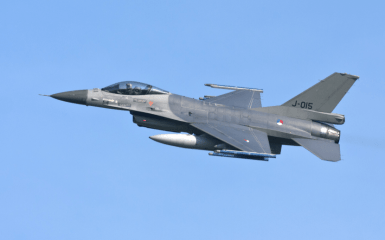Ukraine is preparing for the arrival of F-16 Fighting Falcon fighter jets developed by General Dynamics in the coming months. However, adding single-engine supersonic jets to its arsenal requires more than just training pilots. Over 60 F-16s are offered by Norway, Denmark, the Netherlands and Belgium, and the multinational coalition currently trains pilots and crews. These fighters are in response to Ukraine's request to help even the odds against the Russian air force in the skies.
Ukraine faces challenges with F-16 adaptation
Also, it isn't very easy to get fighters into the air. The bases will be prime targets for a Russian attack, Russian air defence systems will mark the planes themselves, their repair will be a difficult task, and even the use of unprepared airstrips could lead to the sabotage of "sensitive" fighters, according to Politico.
Tom Richter, a former US Marine Corps pilot who flew the F-16 while serving in the National Guard, said the aircraft was a "sensitive beast" compared to the Soviet MiGs and Sus the Ukrainians were used to flying and maintaining. Soviet aircraft are more "rough and tumble". They can fly from poorly maintained airfields and require less maintenance. In another situation, Ukraine would have built modern bases and airstrips to receive aircraft, but in wartime, this is impossible.
If you've ever walked up to a MiG-29 at an air show and then walked up to an F-16, you can get a first-hand feel for just how high-tech the F-16 is. It is very delicate and requires a high level of maintenance, Richter said.
That caution would extend to deploying crews to patch up cracks, crevices, or irregularities in the concrete on runways as close to the front line as possible to avoid turning a few well-maintained facilities into an obvious target.
For starters, runways and control paths at multiple sites must be smooth and constantly checked for debris, given how vulnerable single-engine F-16s are to ground debris compared to MiG-29s, he explained.
The F-16 is a radical change compared to the planes currently being flown by the Ukrainians. At the beginning of 2022, Ukraine had 71 Su-27 and MiG-29 fighters, 14 Su-24M bombers and 31 Su-25 attack aircraft, according to the annual report "Military Balance" of the International Institute for Strategic Studies. The report for 2024 states that Ukraine has 78 combat-capable aircraft.
Since the beginning of the invasion, Slovakia and Poland have also transferred about 33 MiG-29 fighter jets to Ukraine — many of them with upgraded avionics and weapons to bring them up to NATO standards. The F-16 fighter jets, which have been in service with Western air forces for 45 years, will strengthen the Ukrainian Air Force and give it a much more robust ability to confront Russian enemies.
The F-16 will significantly increase the effectiveness of our aviation. The pilot will be able to control the missiles from the air and determine the target. He will be able to receive real intelligence in a combat environment and make appropriate decisions regarding the destruction of targets. Plus, it will be possible to use air-to-air missiles that can fly at a distance of up to 180 kilometers, said Yuriy Ignat, the the Air Force spokesman.
The Ukrainian military must learn to repair, maintain, and hide these fighters from Russian radar, spies, and satellites. Ignat also claimed that F-16s are lighter, more modern and more automated than MiGs. This is confirmed by military personnel who train on these planes.
At first, when we first got acquainted with the system, it seemed to us incomprehensible and unrealistic for integration into Ukrainian realities. But now I realize that it makes things a lot easier, saves time, and is worth moving forward with. If we want to develop as a country, as an air force, — explained the Ukrainian technician Ihor.




